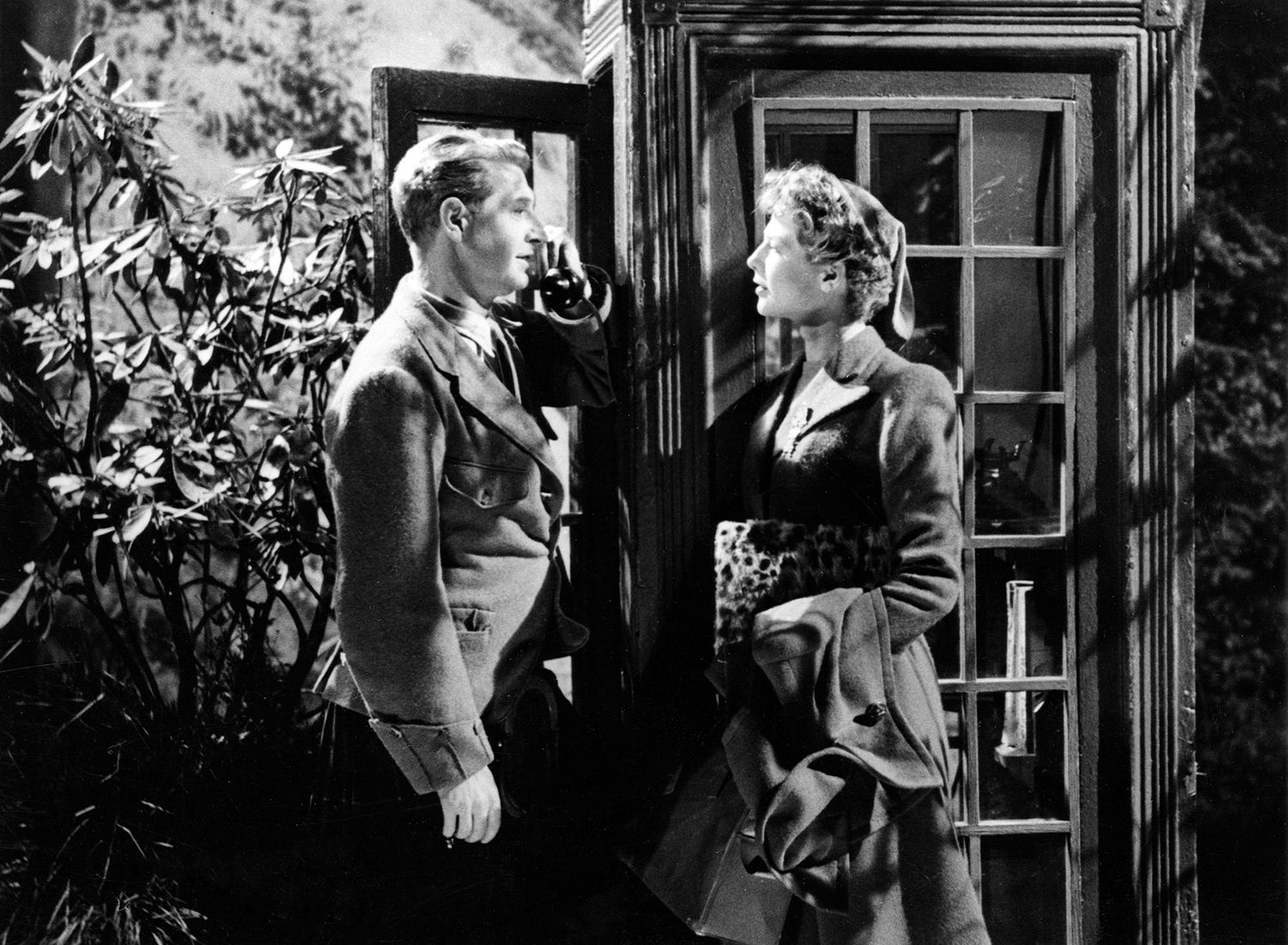
I know where I’m going. I’m on the sleeper train chugging out of Euston and heading to Fort William. A wedding dress hangs on the wall in its transparent cover. I know from my printed itinerary that upon arrival at Fort William, there will be a car, then a ferry from Oban, and finally a gin and Dubonnet waiting for me at the Western Isles Hotel in Tobermory. But no one is getting married. Something much stranger than that is happening: an event that lies somewhere between a fandom convention and a secular pilgrimage.
I’m on my way to the Outer Hebrides to celebrate the 80th anniversary of Michael Powell and Emeric Pressburger’s masterpiece I Know Where I’m Going!. Powell had fallen in love with the Western Isles while making The Edge of the World (1937), which was loosely based on the evacuation of the archipelago of St Kilda. I Know Where I’m Going! is a comedy that plays out in the same highly atmospheric setting. The plot is brilliantly simple. Joan Webster (Wendy Hiller), a headstrong young woman, is on her way to marry her betrothed. And though she is determined that nothing will get in her way, life has other plans – as do Powell and Pressburger. The film becomes a tug-of-war between her willful desire to swiftly expedite her plan on the one hand, and the mysterious logic of fate – and the laws of cinema – on the other. So the heavens repeatedly prevent her from crossing to the island of Kiloran, where her fiancé expects her, and while waiting for the storms to clear, Torquil MacNeil (Roger Livesey), a dashing navy officer, is thrown into her path.
Exploring film locations is a joy. But until I came across the I Know Where I’m Going! appreciation society, I had not thought to include the film in this category of fandom. This is because I Know Where I’m Going! is neither an obscure cult film nor a universally acknowledged classic. It is instead a small great film. Its fans like to compress the title into an acronym, IKWIG, which sounds like the cryptic name of a mythical creature. Unlike other productions of the Archers – Powell and Pressburger’s film partnership – IKWIG was made, for reasons of film stock scarcity during the war, in sober black-and-white rather than sumptuous, flamboyant Technicolor. And it is, on the face of it, that most accessible and unassuming thing – a romance. Why then has it attracted such a dedicated following? Perhaps because, in keeping with all of Powell and Pressburger’s astonishingly inventive body of work, repeated viewings reveal fresh complexities in the storytelling and cinematography. Impregnated with mysticism and filled with surprises, IKWIG is both an entertainment and a fable – comforting and eerie, practical and magical.
Who hasn’t dreamed of stepping into a favourite film? Over the course of the weekend our organisers let us see the Carsaig pier where Joan stands looking out at the hazy contours of inaccessible Kiloran; the Carsaig phone booth, positioned (conveniently for the drama) next to a noisy waterfall; the imposing mass of Moy Castle; Carsaig House (Erraig House in the film), home to Torquil’s dashing friend Catriona (the magnetic Pamela Brown); and the Western Isles Hotel, where Joan and Torquil take rooms while waiting for the weather to abate and where all of us IKWIG lovers are lodged for the weekend.
On our way, inspired by Joan’s journey to Scotland in the film, my friend and I were determined to travel on the sleeper, and she, who has a sense of the theatrical, has brought her wedding dress as a prop, hanging it on the wall just as Joan does. The gin and Dubonnet we have been promised on arrival at our destination is Joan’s drink of choice.
This event lies somewhere between a fandom convention and a
secular pilgrimage
In one unforgettable sequence Joan has a surreal dream. Her train speeds across tartan-clad hills while she imagines herself marrying a faceless entity, Consolidated Chemical Industries, of which her rich fiancé is the president. As she approaches her destination she hears a Scottish voice intoning: ‘Next stop Gretna Green. You’re over the border now.’ We do not dream of tartan hills, though the walls of our little sleeper cabin are lined with tweed and the view in the morning tells us that we have indeed gone over the border. Out there spreads a neolithic landscape of lichen, moss and stones, and an otherworldly, unceasing play of light and shade on the hills. Mist follows us along and deer loom out of it.
How did the film claim us all? One man on the trip had become such a devotee that he moved to Mull, built a house and called it ‘IKWIG’. A Frenchwoman discovered the film during evening classes in Edinburgh: she had had no idea that such remarkable British films existed. Like everyone here, however, our love of IKWIG isn’t just about cinematography: it is about life and meaning. Once we get out on foot, we resemble a band of pilgrims, though like the characters in A Canterbury Tale – another Powell and Pressburger wartime gem – we may not think of ourselves as such. As I stand before the waterfall near the Carsaig phone box, a lady turns to me and tells me that she has just scattered a little of her husband’s ashes into the water.
On the Saturday night we all watch the film in the drawing room of the hotel. One old lady is soon asleep but everyone else is rapt. We are all reflected in a large mirror hanging above the mantelpiece, knitted together by the film. We are quiet. Many of us are silently, excitedly, anticipating our favourite scenes and lines. We cheer at the mention of gin and Dubonnet. Many of us had forgotten how funny IKWIG was.
Seeing the film communally heightens all its fictional qualities. But it also brings us closer to its truth. Authenticity is a complicated thing. Remember that this quintessentially Scottish film was made by Pressburger, a Hungarian-Jewish émigré, and Powell, who’d trained in France and came from Kent. Much of the film, meanwhile, was shot at Denham Studios in Buckinghamshire. Leading man Roger Livesey – who was engaged every evening on stage in London during the shoot – was inserted into the film through the use of rear-projection and in the outdoor scenes cleverly replaced by a stand-in.
And the riveting pivotal scene where the characters negotiate a dangerous whirlpool in a small boat? Fake, too. Cobbled together from assorted nature footage and close-ups shot in the studio, where stage-hands had to throw copious buckets of water over the actors. As Joan finds herself pulled into love by invisible forces, there is a suggestion, as often happens in Powell-Pressburger films, of another reality lurking beyond this one. It’s why the visibly handmade quality of the special effects and bricolage works so brilliantly. By drawing back the curtain on the artistic wizardry, forcing us to catch a glimpse of the artifice needed to engineer this dramatic climax, we’re made even more acutely aware of this mysterious other realm.
Michael Powell’s gravestone reads: ‘Film director and optimist’. And what I Know Where I’m Going! shows us is that, like its misguided heroine, we can always hope to be saved from ourselves. After all there wouldn’t be much to life – nor to cinema – if we really did all know where we were going.








Comments